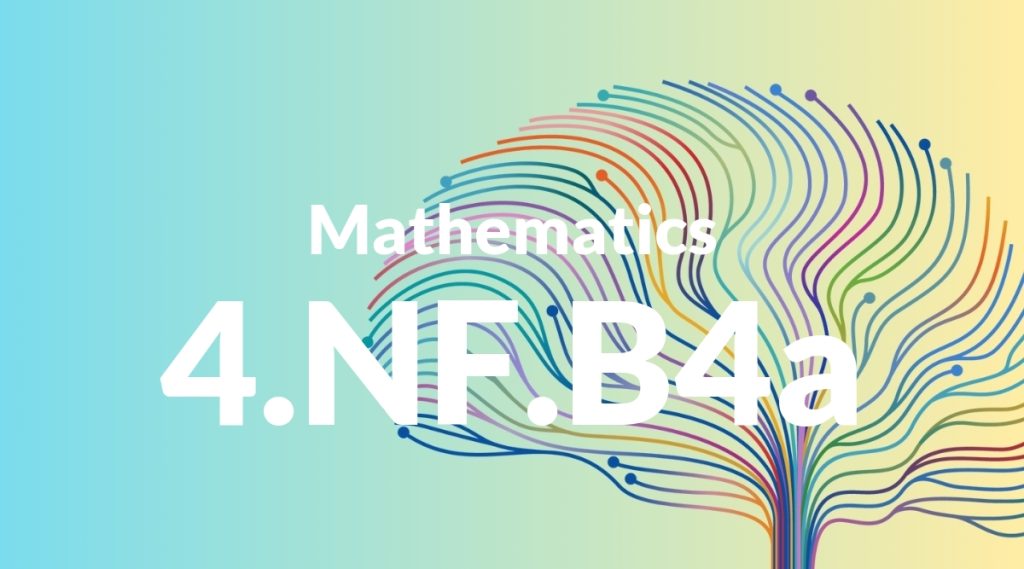Standard: 4.NF.B4a – Understand a fraction a/b as a multiple of 1/b. For example, use a visual fraction model to represent 5/4 as the product 5 × (1/4), recording the conclusion by the equation 5/4 = 5 × (1/4).
Grade level: Grade 4
Subject: Mathematics
Domain: Numbers & Operations – Fractions
Teacher Overview
This standard focuses on helping students understand fractions as multiples of unit fractions. This concept is crucial for building a strong foundation in fraction operations and understanding the relationship between fractions and whole numbers. Students need to have a solid grasp of basic fraction concepts, including the meaning of numerator and denominator, and be comfortable using visual models to represent fractions.
Mastering this standard will prepare students for more advanced fraction operations, including addition, subtraction, and multiplication of fractions, as well as solving complex word problems involving fractions.
Common Misconception 1
A common misconception is that 5/4 is just 5 divided by 4. This overlooks the idea of fractions as multiples of unit fractions, which is a key concept in understanding how fractions work.
Intervention 1
Use visual fraction models and interactive activities to show how 5/4 can be seen as 5 times 1/4. This helps students visualize and internalize the concept.
Common Misconception 2
Another misconception is confusing the multiplication of fractions with whole number multiplication, which can lead to errors in understanding and calculation.
Intervention 2
Provide targeted practice with visual aids and step-by-step guidance on multiplying fractions by whole numbers, reinforcing the correct method through repetition and examples.
Prerequisite Knowledge
Students should have a basic understanding of fractions, including the concepts of numerator and denominator, and how to represent fractions using visual models. They should also be familiar with the idea of multiplication as repeated addition.
Subsequent Knowledge
After mastering this standard, students will be able to perform operations with fractions, including addition, subtraction, and multiplication of fractions. They will also be able to solve word problems involving fractions and understand the relationship between fractions and decimals.
Instructional Activities
- Create visual fraction models with paper or digital tools to represent fractions as multiples of unit fractions.
- Use real-world examples, such as dividing a pizza or measuring ingredients, to illustrate the concept of fractions as multiples.
- Engage students in group activities where they solve fraction problems collaboratively and explain their reasoning.
- Incorporate interactive fraction games and online resources to reinforce understanding through practice and repetition.
- Assign homework that includes a mix of visual and numerical fraction problems to solidify students’ grasp of the concept.




